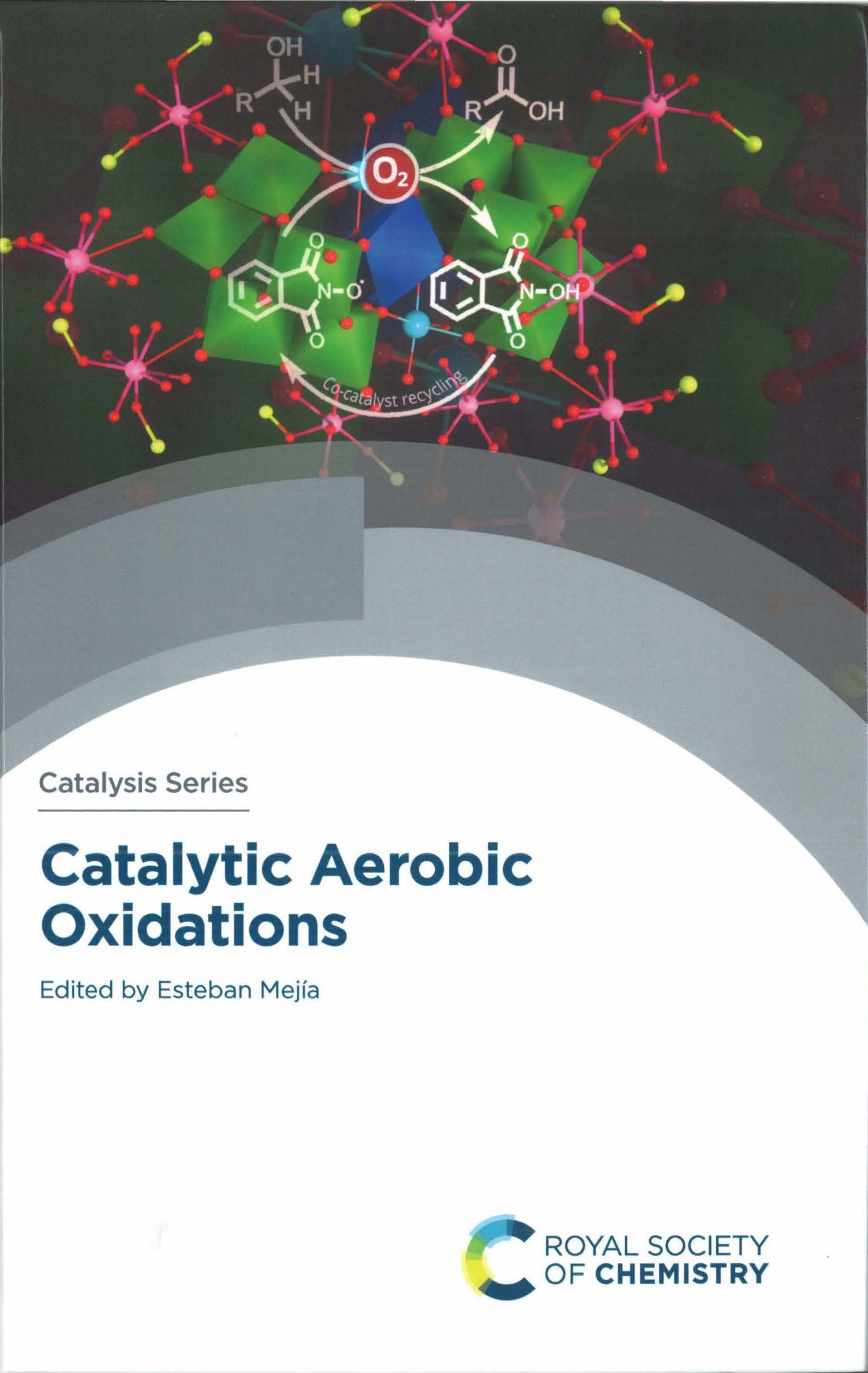
July 2020: HIMS-Biocat group contributes to “Catalytic Aerobic Oxidations” book
Our group has contributed with a book chapter entitled “Bio-catalyzed Aerobic Oxidation Reactions” to the Catalysis Series book entitled “Catalytic Aerobic Oxidation Reactions” edited by prof. Esteban Mejía and published by The Royal Society of Chemistry (RSC).
Book chapter by HIMS-Biocat group
CHAPTER 6, Bio-catalyzed Aerobic Oxidation Reactions in Catalytic Aerobic Oxidations, (Ed. Mejía, E.), RSC Catalytic Series, RSC Publishing, Cambridge (UK), 2020, pages 131–180.
By Jan Vilím, Tanja Knaus and Francesco G. Mutti
Oxidoreductase enzymes enable a large variety of oxidation and oxyfunctionalization reactions at the expense of molecular oxygen, which is most commonly used in the form of air and at atmospheric pressure. Over the past decade, the number of available enzymes and methodologies enabling the performance of these types of reactions has increased significantly, thereby greatly complicating the navigation of the biochemical landscape of aerobic enzymatic reactions. This chapter provides an overview of bio-catalytic reactions that utilize dioxygen as a final electron acceptor or hydroxylating agent with a focus on more mature processes that allow at least gram-scale biotransformations with significant chemical turnovers, thus demonstrating practical applicability in organic synthesis. The described aerobic bio-catalytic reactions comprise: (a) carbon–hydrogen hydroxylation or halogenation; (b) mono- or di-hydroxylation as well as epoxidation or cleavage of alkenes; (c) Baeyer–Villiger oxidation; (d) oxidation of alcohols or aldehydes; oxidative decarboxylation; (e) oxidation of amines or imines; oxidation of organosulfur, organoboron or organoselenium compounds; and (f) oxidative carbon–carbon bond formation. Additionally, this chapter provides brief and selected mechanistic insights into the enzyme classes (i.e., oxygenases, oxidases, and dehydrogenases) that catalyze these biochemical transformations with often excellent chemo-, regio- and stereoselectivities.
Link to book chapter:
https://doi.org/10.1039/9781839160332-00131
About the Book
Oxidation reactions are an important chemical transformation in both academia and industry. Among the major advances in the field has been the development of catalytic processes, which are not only selective and efficient, but also allow the replacement of common stoichiometric oxidants with molecular oxygen, ideally from air at atmospheric pressure. This results in processes with higher atom efficiency, where water is the only side product in line with the principles of green chemistry.
Focusing on the use of molecular oxygen as the terminal oxidant, this book covers recent advances in both heterogeneous and homogeneous systems, with and without metals and on the “taming” of the highly reactive oxygen gas by use of micro-flow reactors and membranes. A useful reference for industrial and academic chemists working on oxidation processes, as well as green chemists.
Book reference
Catalytic Aerobic Oxidations, (Ed. Mejía, E.), RSC Catalytic Series, RSC Publishing, Cambridge (UK), 2020. Print: ISBN: 978-1-78801-720-6. e-book ISBN: 978-1-83916-033-2
Link to book:
https://doi.org/10.1039/9781839160332


